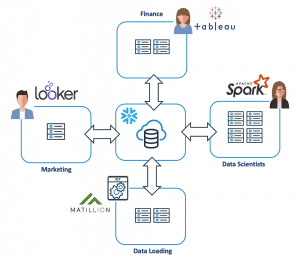John Moore, Alex Lennox-Miller, Jody Ranck

Last week, Cerner held part one of its two-part Cerner Health Conference (CHC). While we miss the opportunity to attend these meetings in person as it is far more insightful – thanks COVID – we did walk away with a few insights.
Key Takeaways:
- Pragmatic keynote by CEO painted a picture of let’s stick to our knitting and remain physician-focused. Not too surprising in light of COVID, but lacking vision on future industry trends post-COVID and how Cerner intends to respond.
- Good progress on care management capabilities, including transitions. Cerner’s work with the Military Health System (MHS) may be instructive on their path forward here.
- HealtheEDW will see a big upgrade as it transitions to Snowflake, moving away from previous third-party partner Vertica.
- Cerner’s Learning Health Network (LHN), similar to Epic’s Cosmos, is gaining traction with over 47 health systems now signed on.
Rather than the annual pilgrimage to Kansas City to attend CHC, this year we sat in our respective home offices listening to what is basically a series of webinars. Most seemed to be pre-recorded but the speakers giving those presentations were fully available during the presentation to answer questions a la chat – one of the nicer features we’ve seen lately in this weekly series of virtual user conferences (InterSystems is this week).
As with other user events we’ve been attending, it is difficult to pick up a consistent theme or thread for a given conference – CHC2020 was no different. Where it was similar to other events is in its focus on their response to COVID, their efforts to minimize clinician fatigue, and overall a very pragmatic message for clients: We know the challenges you are up against – we are here to support you.
But as one listened to the opening keynote, one was struck by just how dated it sounded. It harkened back to clinician-focused models and not the more progressive patient/consumer-focused models of today and tomorrow. While Cerner was expressing empathy for what its clients are going through today, a lack of vision of what a post-COVID health system will be was surprising and a missed opportunity.
MHS Work a Treasure Trove for the Future
Several sessions of CHC discussed the massive amount of work Cerner has been putting into the deployment of its EHR across the Military Health System (MHS). Their work with MHS offers Cerner unique insights into a system that coordinates a patient’s care with a single unified record regardless of their location, diagnosis, or care needs.
As healthcare interoperability promises more unified records and more integration of a myriad of software solutions, EHRs, and sites of care, this could be a vital point of expertise for Cerner to leverage going forward. But it isn’t clear if Cerner plans to take advantage of this. Their MHS products still appear to be treated as distinct from their commercial offerings. We hope that this was simply an oversight on Cerner’s part or a misunderstanding of ours. Again, virtual conferences just make it difficult to have follow-on discussions to understand further what a company’s intent may be.
Best Practices in SDoH
In the area of social determinants of health (SDoH), Cerner has created an innovation collaborative across 50 provider organizations to share best practices. Roper St. Francis (Charleston, SC) gave an excellent overview of how a simple geospatial approach to SDoH can return some impressive results.
Applying a geospatial analysis to the community, Roper St. Francis found that a lower-income African-American cluster of diabetes/hypertension cases clustered around a church. The church became the point of engagement for reaching out to the community and ultimately resulted in significant improvements in the number of patients who are considered as managing their condition well. They also used the geospatial analysis to deploy a transitions clinic to improve access to care.
In conjunction with the geospatial efforts to address SDoH, Roper St Francis also went on to automate data integration across its acute and ambulatory networks to streamline reporting and better allocate resources. Combined, these efforts saved this healthcare system $8M in care delivery costs for under/uninsured patients in this non-Medicaid expansion state.
Analytics, a Foundational Element
Across sessions/presentations throughout this event, analytics and the insights they create were pervasive. From their AI-based Sepsis, COVID triage, or Opioid addiction apps to administrative functions, care management, consumer engagement, and population health, analytics underpinned them all.
Within the realm of population health, Cerner will be releasing HealtheEDW Advanced in the near future. Currently, HealtheEDW runs on the Vertica EDW platform. HealtheEDW Advanced will run on the newcomer in the EDW market, Snowflake, a fully cloud-hosted EDW platform. Unlike HealtheEDW, which allows for the use of just Tableau and Business Objects, Snowflake allows end-users to tap a much wider range of third-party data analysis and visualization tools. This is a good move by Cerner and will be well-received by clients.

Cerner has also established the Learning Health Network (LHN), which similar to Epic’s Cosmos is a shared data resource of de-identified patient data that is contributed by participating health systems. Today there are over 47 participating systems, one of the Duke University, who gave the opening keynote on the power of such a repository to advance clinical research.
Now, if we could only get Cerner and Epic to play nice and combined their respective shared clinical datasets, my gosh, clinical researchers from all corners of the healthcare sector worldwide will have a field day. And from my personal perspective (JM) begin to fully leverage this data to dramatically improve clinical pathways and ultimately the patient experience.




0 Comments